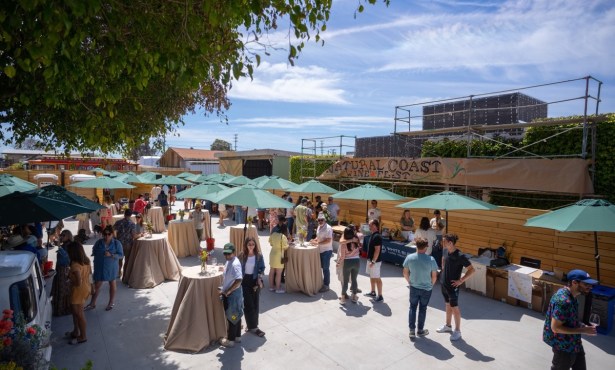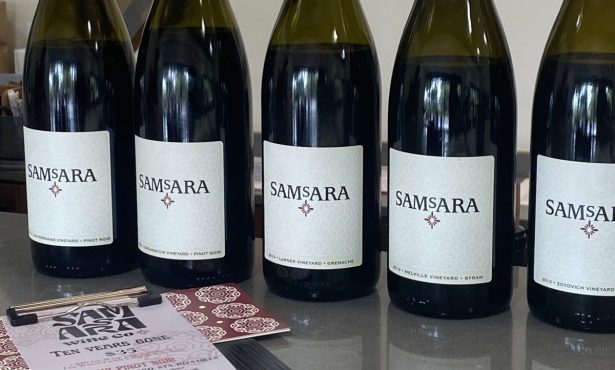Santa Barbara County’s First Syrah
Zaca Mesa Celebrates 30 Years of the Black Bear Block
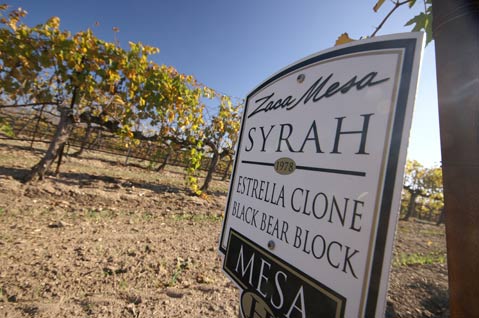
For a land long ruled by popularly praised pinot noir and critically acclaimed chardonnay, Santa Barbara County is finally starting to get the respect it deserves for our other reliably excellent grape varieties. Leading this surge seems to be syrah, the rich and hearty red wine grape originally from France’s Rh’ne Valley. Playing a critical role in this rising trend are the folks at Zaca Mesa Winery, who were the first to plant the grape in Santa Barbara County back in 1978. Thirty years later, that three-and-a-half acre corner of the vineyard-known affectionately as the Black Bear Block, a nod to the remote property’s furry neighbors-is producing perhaps finer wine than ever before.
“We didn’t set out to be syrah producers,” said Brook Williams, Zaca Mesa’s president and CEO since 2003, during a tour of the vineyard last week, “but that’s what Mother Nature continues to show us produces well here.” The winery’s first syrah vines came from Gary Eberle, who imported syrah to the Central Coast in the early ’70s when he smuggled clippings back from France and planted them along the Estrella River near Paso Robles. At Black Bear, the clones were planted on their own roots, which Williams said is “relatively rare” in a region often reliant on disease-resistant rootstock. Eberle’s own early vines were eventually replaced, leaving Black Bear’s vines as the oldest syrah on the Central Coast as well as the only original Estrella clones still growing on their own roots. That authenticity today attracts wine growers from all over who come to buy clippings from the Black Bear vines, which sell for 50 cents a shoot but bring the winery an additional $6,000 to $8,000 annually. (If you do the math, that’s more than 12,000 clones sold each year.)
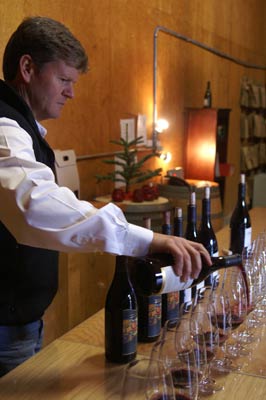
When the syrah was planted, no one at Zaca Mesa – which was founded in 1972 by a handful of oil men and real estate investors, including current owner John Cushman from Pasadena-could have predicted that the Black Bear vines would open the gate for others to succeed at syrah. In fact, when they were planted, the juice was most likely just used to “fluff up” original winemaker Ken Brown’s pinot noirs, said Williams. But over time, it was clear that the founders had, according to Williams, “picked a good piece of dirt”-specifically, two hilltop mesas in Foxen Canyon. The critical wine world verified as much when Wine Spectator named the 1993 Zaca Mesa Syrah-made by then-winemaker Dan Gehrs-as the sixth best wine of 1995. “That put Zaca Mesa on the map,” said Williams, noting that other big-name winemakers such as Jim Clendenen of Au Bon Climat and Bob Lindquist of Qupe also put in work at the winery in the early days.
The winery has remained on the map thanks to the consistency of its product, though the newer plantings certainly taste much different than the old-growth Black Bear fruit. According to Williams, the younger syrahs are more like “teenage boys”-hard to contain, won’t do what you tell them, et cetera-whereas the Black Bear wines are more like Cary Grant. “They’re confident and sophisticated,” said Williams, who further compared the young vines to Pamela Anderson and older ones to Katharine Hepburn. “They don’t have to show it off, but you know it’s there.”
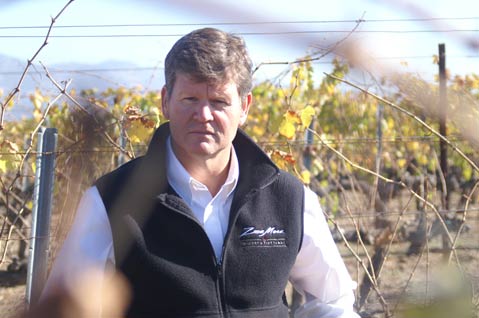
Since Williams took over five years ago, Zaca Mesa has been ripping out vines that only performed marginally and replacing them with better grape clones and new technology. “We don’t have to do okay wines anymore,” said Williams, who’s previously worked with E & J Gallo Winery, Beringer Wine Estates, Kendall-Jackson, and Australia’s Southcorp Wines, where he grew fond of syrah (or shiraz, as they call it down under). He and winemaker Eric Mohseni are also committed to making more food-friendly wines. “The wine should be the salt and pepper to the steak, not the steak,” said Williams.
And Zaca Mesa’s Rh’ne Valley train doesn’t just stop with syrah-aside from some chardonnay (which hails from France’s Burgundy region), the rest of the vineyard’s 244 plantable areas are taken up by both red and white Rh’ne grapes. That mix allows the winery to foster a growing consumer interest in white Rh’nes such as viognier, roussanne, and grenache blanc while still being able to make their increasingly popular red blends Z Three (a mix of syrah, mourvdre, and grenache) and Z Cuvee (those three with a dash of cinsaut).
But the Black Bear Block remains the very heart and soul of what’s happening in 2008 at Zaca Mesa. “The way I see it,” said Williams after a day of tasting wines new and old, “we’re preserving history up here.”
4•1•1
Zaca Mesa Winery is located at 6905 Foxen Canyon Road in Los Olivos. Call 688-9339 or visit zacamesa.com for more information.


